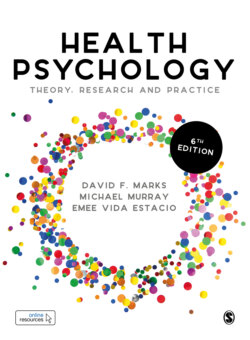Читать книгу Health Psychology - Michael Murray - Страница 39
На сайте Литреса книга снята с продажи.
Inflammation
ОглавлениеInflammation is a critical defence response in our innate IS wherein white blood cells protect us from infection by foreign organisms, bacteria and viruses. Inflammation occurs following infection or tissue damage when a rapid and complex series of reactions takes place to prevent tissue damage, isolate and destroy the infective organism, conserve and protect some micronutrients and activate the repair processes to restore normal function (Thurnham, 2014). Inflammation is a homoeostatic process that is only intended to last a few days but, if it is continued indefinitely, there is a poor prognosis in many conditions. Inflammatory responses take precedence over normal body metabolism with the objective of restoring normality as quickly as possible.
In a young person, bouts of inflammation are vital for fighting off disease. As people age, they tend to have mild, chronic inflammation, which is associated with an increased risk for heart disease, arthritis, frailty, Type 2 diabetes, physical disability and dementia. Whether inflammation leads to disease, disease leads to inflammation, or whether both scenarios are true currently remains uncertain. Centenarians and other people who have grown old in relatively good health generally have less inflammation and more efficient recovery from infection and inflammation when compared to people who are unhealthy or have average health. Acute inflammation on a timescale of seconds to days allows the host to heal and protect damaged tissue from disease. Chronic inflammation lasting weeks or months is linked to many pathologies and age-related diseases, including sleep apnea, insomnia, neurodegeneration, Alzheimer’s disease, atherosclerosis, cancer, kidney and lung diseases, metabolic syndrome and Type 2 diabetes mellitus.
Disorders of the IS can result in autoimmune diseases, inflammatory diseases and cancer. When the IS is less active than normal, which is called immunodeficiency, recurring and life-threatening infections can occur. Immunodeficiency can result from a genetic disease, acquired conditions such as HIV infection (see Chapter 22), or the use of an immunosuppressive medication.
The opposite situation of autoimmunity results from a hyperactive IS attacking normal tissues as if they were foreign organisms. Common autoimmune diseases include Hashimoto’s thyroiditis, rheumatoid arthritis, Type 1 diabetes mellitus (see Chapter 23) and systemic lupus erythematosus. Autoimmune diseases are chronic conditions with no cure. Treatment requires controlling the disease process to decrease the symptoms, especially during flare-ups. The following actions can alleviate symptoms of autoimmune disease: a balanced and healthy diet, regular exercise, plenty of rest, vitamin supplements (especially A and D), a decrease of stress, and the avoidance of any known triggers of flare-ups. Sound familiar? Hippocrates knew about them and your doctor’s waiting room has a poster.
